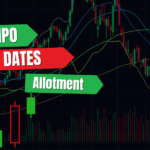The Grey Market Premium (GMP) is a term that often surfaces during discussions about Initial Public Offerings (IPOs). It serves as an indicator of investor sentiment and potential performance of a company’s stock upon its official listing. In this comprehensive guide, we’ll delve into the intricacies of the IPO grey market, the role of grey market dealers, the dynamics of trading within this unofficial sphere, and the various rate types associated with it. Additionally, we’ll explore the pros and cons of grey market trading, its comparison with official listing prices, and provide insights into its overall impact on investors.
What is the Grey Market?
The grey market, often referred to as a parallel market, is an unofficial platform where financial securities, particularly IPO shares, are traded before their official listing on recognized stock exchanges. Unlike the primary and secondary markets, the grey market operates without regulatory oversight from bodies like the Securities and Exchange Board of India (SEBI). Transactions in this market are based on mutual trust and are typically conducted in cash and in person. It’s important to note that while trading in the grey market is legal, it remains unofficial and unregulated.
IPO Grey Market Premium Meaning
The Grey Market Premium (GMP) represents the price at which IPO shares are traded in the grey market over and above their issue price. For instance, if a company’s IPO is priced at ₹100 per share and the GMP is ₹20, it implies that investors are willing to buy the shares at ₹120 each in the grey market. This premium reflects the perceived value and demand for the shares before they are officially listed.
MUST READ: Best Investment Options in India with High Returns
IPO Grey Market Dealers
Grey market dealers act as intermediaries between buyers and sellers in this unofficial market. They facilitate the trading of IPO shares or applications before the official listing. These dealers operate based on trust, given the absence of formal regulatory frameworks. Investors looking to sell their IPO allocations or applications at a premium often approach these dealers to find potential buyers.

Trading in the Grey Market
Trading in the grey market involves two primary activities:
- Trading Allocated IPO Shares: Investors who have been allotted IPO shares may choose to sell them in the grey market before the official listing. This allows them to capitalize on the prevailing GMP without waiting for the stock to list on the exchange.
- Trading IPO Applications: Some investors sell their IPO applications at a fixed price, known as the Kostak rate, regardless of whether they receive an allotment. This enables them to secure a guaranteed return without the uncertainty of the allotment process.
These transactions are typically facilitated by grey market dealers who match buyers and sellers based on mutually agreed terms.
MUST READ: What Is Personal Finance
IPO Grey Market Rate Types
In the grey market, several rate types are prevalent:
1. Grey Market Premium (GMP)
As previously discussed, GMP is the extra amount over the issue price that investors are willing to pay for IPO shares in the grey market. It serves as an indicator of the expected listing performance of the stock.
2. Kostak Rate
The Kostak rate refers to the price at which an investor can sell their IPO application in the grey market. This rate is agreed upon irrespective of the outcome of the allotment. For example, if an investor sells their application at a Kostak rate of ₹500, they receive this amount even if they don’t get any shares allotted.
3. Subject to Sauda
This term pertains to a conditional agreement where the seller sells their IPO application with the condition that it is only valid if they receive an allotment. The agreed-upon amount is paid only if the shares are allotted to the seller.
Grey Market Premium vs. Listing Price
While the GMP provides an insight into investor sentiment and the anticipated performance of an IPO, it doesn’t always correlate directly with the actual listing price. Various factors, such as market conditions, company fundamentals, and broader economic indicators, can influence the stock’s performance upon listing. Therefore, while a high GMP might suggest optimism, it’s not a guaranteed predictor of listing gains.
Grey Market Trading: Gains and Losses
Engaging in grey market trading comes with its set of advantages and disadvantages:
Advantages
- Early Profit Realization: Investors can capitalize on favorable GMPs to secure profits before the official listing.
- Demand Indicator: The GMP(Grey Market Premium) can serve as a barometer for the demand and potential performance of the IPO.
Disadvantages
- Lack of Regulation: The absence of regulatory oversight means there’s a higher risk of defaults and fraudulent activities.
- Market Manipulation: Prices in the grey market can be easily manipulated due to low transparency and the informal nature of transactions.
- Legal and Ethical Concerns: Engaging in grey market activities may raise ethical questions and potential legal implications, especially if disputes arise.
Is Grey Market Premium Good or Not?
The GMP(Grey Market Premium) is a double-edged sword. On one hand, it offers insights into market sentiment and provides opportunities for early gains. On the other hand, its unofficial and unregulated nature introduces risks that investors must carefully consider. It’s essential to approach grey market activities with caution, conduct thorough due diligence, and be aware of the inherent risks involved.
MUST READ: What is Public Finance
How to Calculate Grey Market Premium (GMP)?
The Grey Market Premium (GMP) is calculated as the difference between the grey market price and the IPO issue price. Here’s the formula:
GMP=Grey Market Price−IPO Issue Price\text{GMP} = \text{Grey Market Price} – \text{IPO Issue Price}
If you want to calculate the expected listing price using GMP, you can use:
Expected Listing Price=IPO Issue Price +GMP\text{Expected Listing Price} = \text{IPO Issue Price} + \text{GMP}
Example:
- IPO Issue Price = ₹100
- GMP = ₹30
Expected Listing Price=100+30=₹130\text{Expected Listing Price} = 100 + 30 = ₹130
This means the stock is expected to list at ₹130 based on grey market sentiment. However, actual listing prices may vary due to market conditions.
Conclusion
The IPO grey market and its associated premium offer a glimpse into investor sentiment ahead of a company’s official listing. While it can provide opportunities for early profits, it’s crucial to recognize the risks stemming from its unregulated nature. Investors should exercise caution, conduct thorough research, and consider the broader market context before engaging in grey market activities.
FAQs
1. Is trading in the grey market legal?
Yes, trading in the grey market is legal in India. However, it operates unofficially and is not regulated by authorities like SEBI. Transactions are based on mutual trust, and investors should be aware of the associated risks.
2. How is the Grey Market Premium (GMP) determined?
The GMP(Grey Market Premium) is influenced by factors such as investor demand, market sentiment, and the perceived potential of the IPO. If an IPO is highly anticipated, the GMP tends to be higher due to increased demand.
3. Does a high GMP(Grey Market Premium) guarantee a profitable listing?
No, a high GMP(Grey Market Premium) does not guarantee that the stock will list at a premium. While it indicates positive market sentiment, various factors can influence the actual listing price, and the GMP can fluctuate before the listing date.
4. What is the difference between Kostak Rate and Subject to Sauda?
- Kostak Rate: This is the price at which an investor can sell their IPO application in the grey market, regardless of share allotment. It provides a fixed return to the seller.
- Subject to Sauda: In this arrangement, the sale of the IPO application is conditional upon the allotment of shares. The agreed-upon amount is paid only if the shares are allotted to the seller.
5. How can I participate in grey market trading?
Participation in the grey market is typically facilitated through local dealers or brokers who specialize in these unofficial transactions. It’s essential to approach such dealings with caution due to the lack of regulatory oversight.
6. Are profits from grey market trading taxable?
Yes, any profits earned from grey market trading are subject to taxation under capital gains tax laws in India. It’s advisable to consult with a tax professional to understand the implications fully.
7. Can GMP be negative? What does that indicate?
Yes, the GMP can be negative, indicating that the grey market expects the IPO to list below its issue price. This reflects pessimistic market sentiment towards the IPO.
8. How reliable is GMP as an indicator for IPO performance?
While GMP(Grey Market Premium) provides insights into market sentiment, it is not a definitive predictor of an IPO’s performance. Investors should consider other factors, such as the company’s fundamentals, industry outlook, and overall market conditions, before making investment decisions.
Riyo is a Digital Marketing expert with specialization in SEO and Market Analysis. He has hands-on experience in keyword research, on-page & off-page SEO, and data-driven marketing strategies. Riyo helps businesses boost their online visibility and grow through smart digital tactics.


